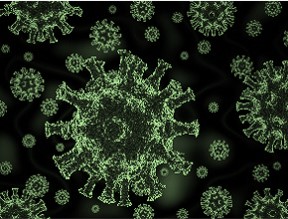Dr Zain Chagla is an associate professor at the Faculty of Health Sciences at McMaster University and consultant physician at St. Joseph’s Healthcare Hamilton, Ontario.
How should we interpret inconsistent COVID-19 test results in asymptomatic individuals?
Zain Chagla, MD, MSc: The first part is, what is the clinical history? Particularly with polymerase chain reaction (PCR)–based testing, we know [that] people can test positive for quite some time after their coronavirus disease 2019 (COVID-19) infection—weeks to months. So, the spectrum of illness here could be someone who’s right at the beginning of their illness, during their illness and infectious to others, or someone who’s completely convalesced from their illness and is just having some residual viral shedding on PCR.
On antigen testing, it’s a little bit different. The viral load needed for an antigen test to be positive is actually quite high. So, a positive antigen test, if done correctly, is likely indicative of someone who is COVID-19 positive and should always be followed up by PCR to confirm. But a positive antigen test usually indicates a good amount of the antigen present, which is really in keeping with someone [who has] a high viral load or is infectious to others. So, a positive antigen test should be regarded as a positive test. People should get a positive PCR as part of their workup. But I would consider isolation and precautions for that individual until that’s established. There are occasionally false positives that don’t matter, discrepant to PCR, but they don’t occur very often.
A PCR-positive [result], though, is different, especially in an asymptomatic individual. So, it’s important to get a history, particularly of even nonspecific minor symptoms in the last 1 or 2 months for those individuals, as they may have had a COVID-19 illness 1 or 2 months ago. If you have access to a laboratory, ask in the lab for what’s called the cycle threshold, which is a measure of how much virus is actually amplified on PCR, which often gives you a sense of the viral load. When people are very infectious, their cycle thresholds are <25, when people are less infectious or towards the tail of their illness, or persistently shedding, [the thresholds are] >30 to 35 in that sense, which is really in keeping with that low-grade shedding over time, which is not infectious but will give you a positive test.
Doing a repeat test also helps with the trajectory. People’s cycle thresholds are quite high at the beginning of their illness too, and they become lower as their illness progresses. They get a higher viral load. So, doing a sequential test that shows a negative result or a cycle threshold that’s also high really does keep with people who are late into their illness, who are just persistently shedding, who are not infectious to others. [These are] old infections that can be 2 or 3 months old. If the viral load does get higher on the repeat test, then that is actually indicative of someone who’s probably incubating COVID-19, who is now becoming symptomatic or at least infectious with their COVID-19.
The bottom line is every circumstance counts. Getting a history of symptoms is important because you can date the infection from there. Using a repeat test to see a positive [result] or [to see whether] the viral load is any better or worse gives you another sense. And then, finally, looking at the cycle threshold itself, which is a surrogate measure for viral load, can often help tell you the difference between an early infection or late infection, along with the serial test.
 English
English
 Español
Español
 українська
українська











